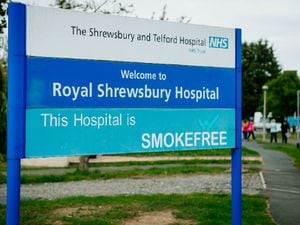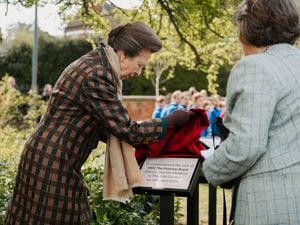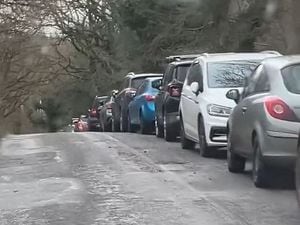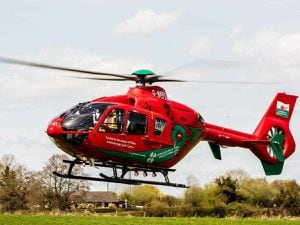Flashback to October 1978: Discovery of aircraft gives family closure
For 37 years after his final flight from a wartime Shropshire air base teenage pilot John Toplis Carr was officially classed as "missing presumed dead."
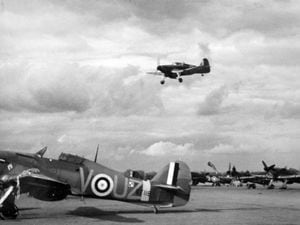
But despite his name appearing on the Runnymede Memorial, officialdom had a good idea where 19-year-old Leading Aircraftman Carr really was.
And on October 27, 1978, he was at last found, still with his aircraft, buried in a Shropshire peat bog.
Sadly his mother had died without realising her greatest wish, that her son would one day be traced.
Carr's remains were recovered and one of the RAF's disappeared pilots was finally given a decent burial.
The poignant story of one of the war's last lost victims begins on April 10, 1941. Carr, who before enlisting in the RAF had been an articled clerk with a law firm in Eastbourne, was training at RAF Tern Hill to be a pilot, and his task that day was a solo cross country flight.
The exercise successfully completed, he was preparing to land back at Tern Hill in the early afternoon when his Miles Master aircraft was in a mid-air collision with another Miles Master, piloted by another 19-year-old trainee, which had just taken off.
What happened next is recounted in a book, "Finding The Fallen," by Andy Saunders.
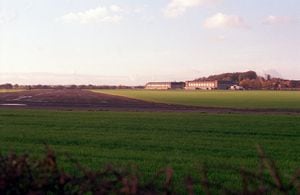
"Carr's aircraft plunged into a swampy and waterlogged piece of land at Helshaw Grange Farm, Tern Hill, and immediately vanished almost totally from sight," he writes.
"Just part of the tailplane was visible above the surface and farm worker Bill Ashley was first on the scene and aghast at what he could see – or rather at what little he could see."
He guided an RAF rescue and recovery team to the site.
"Of the pilot, there was simply no trace although efforts at once began to haul the aircraft out of the bog using farm horses harnessed to ropes and chains. Inevitably, the attempt was futile and only succeeded in pulling off part of the tail section as the rest of the Miles Master sank deeper still into the sodden peat."
According to the Ministry of Defence, the Royal Engineers declined to undertake salvage and the station commander at Tern Hill reported there was considerable danger of loss of life to his salvage party.
They were down to 16ft underground in the swamp and, because of the danger, authority was given to abandon salvage attempts. There was a funeral service in situ, and the crash site was simply fenced off and left.
Andy Saunders writes: "Whether or not Mr and Mrs Carr were told exactly where their son's body lay entombed is not known, although they were eventually notified that his name would be recorded on Panel 56 of the Runnymede Memorial (for the missing)."
The other pilot was also killed and his body recovered at the time.
Fast forward to October 1978, and enthusiasts from the Shropshire Wartime Aircraft Recovery Group, which had only been established the previous April, were given permission to investigate the site, which was not listed as a war grave, using an excavator. And so, at last, many years after the end of the conflict, the pilot's remains were recovered.
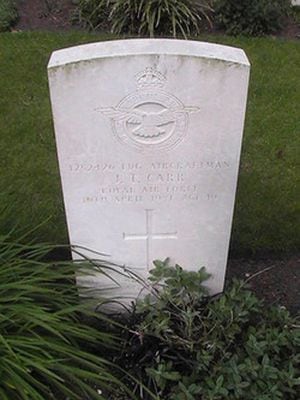
The team even found an old spade which had been used in the original abortive salvage attempts.
There was no clue to identity on the crash victim's trousers and tunic, but a diary was found in which there was a pencilled note which was still legible – "My birthday, 4th July."
John Carr had been born on July 4, 1921.
But was there any family left alive to tell about the discovery? Ministry of Defence records said the parents lived at Marchant Cottage, Motcombe Lane, Eastbourne, but the house had disappeared and attempts to trace relatives drew a blank.
The inquest in Wellington on February 13, 1979, recorded a verdict of accidental death. A family friend saw a report of the inquest in an Eastbourne newspaper and that led to his sister Mrs Mary Seagrief, living in South Africa, being traced. Her daughter, John Carr's niece, was studying at Southampton University.
Carr was buried with full military honours on April 4, 1979, at the huge wooded 500-acre Brookwood Cemetery in Surrey after a service conducted by the padre of RAF Uxbridge.
Wartime Aircraft Recovery Group members David Thorp and John Wright attended the funeral as did Carr’s relatives and friends and RAF officers.
The gravestone includes the words: "Rest Now In Loving Peace, April 1979."
Meanwhile the Ministry of Defence altered its records. One of its pilots was no longer missing.

